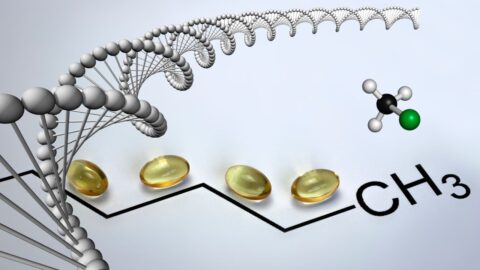How Healthy is your Vagina?
by Vanita Dahia
The health of your vagina affects much more than your sex life.
Vaginal health is an important part of a woman\’s overall health as it can affect your fertility, desire for sex and ability to reach orgasm.
Ongoing vaginal health issues can affect your confidence and cause stress in a relationship. We know about the gut microbiome but did you know the vaginal microbiome is equally important?
The vaginal microbiome is an intricate and dynamic microecosystem that constantly undergoes fluctuations during the female menstrual cycle and the woman\’s entire life.
In females, one of the main microbiota sites is the genital tract that hosts over 200 bacterial species. Unlike other microbiota sites, the vagina is extremely dynamic and is affected by numerous host factors including age, ethnic background, sexual intercourse, changes in hormone levels during pregnancy, menstruation and menopause, genital infections and personal hygiene.
Healthy Vaginal Microbiome
A healthy vaginal microbiome is dominated by Lactobacillus which produce various antimicrobial compounds.
Any disruption of the vaginal microbiota, also known as dysbiosis, has been linked to a multitude of conditions, including bacterial vaginosis (BV), miscarriages, preterm delivery, pelvic inflammatory disease (PID) and increased risk of sexually transmitted infections (STIs).
Vaginal infections, including bacterial vaginosis (BV), vulvovaginal candidiasis (VVC), and trichomoniasis (TV), are among the most common reasons for which women seek medical help.
How Prevalent are Vaginal Infections?
3 out of 4 women will have at least one episode of VVC, TV or BV in their lifetimes.(1)
Approximately 30% of women test positive for BV and many are asymptomatic (no symptoms).
Women who experience symptoms of vaginosis or vaginitis assume they have a simple yeast infection and often use over the counter fungal creams or pessaries to treat the infection.
However, more than 50% of women treat incorrectly which then leads to repeated and recurrent vaginal infections.
Most health professional assume a fungal infection and often do not identify the exact microbial infection.
Ineffective treatment of the infection can increase the risk of serious complications, such as delivery of preterm or low-birth-weight babies, late-term miscarriage, HIV infections, and development of pelvic inflammatory disease (PID) (2)
Types of Vaginal Infections
All vaginal infections are not candida-type infections. Types of vaginal infections may include:
- Bacterial Vaginosis (BV)
- Chlamydia
- Gonorrhoea
- Genital Herpes
- Hepatitis
- HIV/AIDS & STDs
- Human Papillomavirus (HPV)
- Pelvic Inflammatory Disease (PID)
- STDs & Infertility & Pregnancy
- Chancroid – caused by anogenital infection with the bacterium Haemophilus ducreyi.
- Lymphogranuloma Venereum (LGV)
- Mycoplasma genitalia
- Pubic Lice Infestation
- Scabies
- Syphilis
- Trichomoniasis
Signs and Symptoms of Vaginal Infections
A cluster of symptoms may be present at any one time or may present cyclically. Symptoms may include:
- Clear or slightly cloudy vaginal discharge which will vary during a menstrual cycle, may be itchy or not
- Noticeable discharge which can change in colour, heaviness or odour
- Burn, itch, noticeable odour
- Irritation at night, burning or itching during or after sex
- Pain around or outside vagina
- Burns when urinating
- Sex may be uncomfortable
7 Vaginal Smells
The vagina emits different smells as a result of hormonal and ecologic fluctuations. The smells of the vagina may be expressed as:
- Fermented or Tangy – Lactobacilli bacteria keep the vagina acidic
pH of a healthy vagina is slightly acidic, between 3.8 and 4.5
- Metallic or coppery – menstrual blood contains Fe
- Sweet – vaginal pH is an ever-changing bacterial ecosystem
- Chemical – like detergent due to ammonia from urine
- Smoky or bad BO – sweat glands in groin
- Fishy – Trichomoniasis
- Rotten – forgotten tampon for foreign object
Current Diagnostic Options
Vaginal infections can be assessed though a physical examination, an Amsell or nugent method. The criteria of identification include:
- Type of vaginal discharge
- Vaginal pH of greater than 4.5
- Positive whiff test results
- Presence of clue cells (vaginal epithelial cells studded with adherent coccobacilli on microscopic examination)
These traditional diagnostic methods have their limitations due to its subjectivity and have relatively low sensitivity (61%) and specificity (77%) for BV or microscopy for VVC.(2)
Vaginal Microbiome Profile
It is now possible to use advanced techniques to measure the composition of the vaginal microbiota.
Trichomonas vaginalis infection is present in more than 11% of women age 40 years or older
Lactobacillus, symbiotic species of microbes, primary role is to restore pH of the vaginal mucosa to a slightly acidic level which prevents the growth of yeast, bad bacteria and other pathogenic organisms which generally prefer a more alkaline environment to survive.
Lactobacilli are extremely important for vaginal health due to their protective and antimicrobial functions. Lactobacilli produce lactic acid, creating an acidic environment (pH 2.8–4.2) that is inhospitable to vaginal pathogens.(3)
Some Lactobacillus species also produce antimicrobial compounds such as bacteriocins that inhibit growth of pathogenic microorganisms such as Candida albicans, Prevotella bivia and E. coli(4)
Testing for Vaginal Microbiome
A Vaginal swab is required to identify the complexity of the vaginal microbiome typically associated with vaginal infection. The vagina microbiome profile identifies and reports on:
- Abundance of Lactobacillus species (markers for vaginal health)
- Abundance of strictly anaerobic bacteria (associated with dysbiosis)
- Abundance of enteric bacteria (associated with aerobic vaginitis)
- Presence of STI pathogens
- Abundance of BV-associated bacteria
Reports on:
- Healthy vaginal microbiota (homeostasis)
- Vaginal dysbiosis (microbiota profile and/or host marker profile)
- STI pathogen detected (Chlamydia, HSV-1, HSV-2)
Management of Vaginal infections
Some basic principles of a health vagina include:
- Avoid harsh soaps and douching
- Probiotics used orally and intravaginally have been shown to restore a diverse, healthy microbial ecology
- If using tampons, ensure that tampons are changed regularly
- Use barrier protection or use latex condoms during sex to avoid cross contamination
- Abstain from sex during treatment and limit sexual partners
- Wear clothes that breathe
Pharmaceutical medication is used as an oral or vaginal dose usually consisting of antifungals like metronidazole, clindamycin, clotrimazole, Butoconazole, Miconazole, nystatin and imidazole or terbinafine.
Natural Medicines both topical or intravaginal Applications may include:
- Vitamin C, boric acid pessaries
- Herbal medicine such as Calendula and goldenseal with Vit E in a pessary or cream
- Fermented whey or probiotics in shea butter frozen into pessaries
- Boric Acid with Vit C pessaries particularly effective against Candida glabrata
- Sitz bath treatment using warm water and sodium bicarbonate
Phyto-therapy for Vaginal Infections
Herbal medicine have profound anti-microbial effects and can be used orally or intravaginally with the help of a qualified clinical herbalist. Some herbs worth noting are:
- Thyme, an antifungal against C.albicans, inhibit formation of G.vaginalis biofilms
- Propolis, Myrrh, Pelargonium, Calendula, Pomegranate, Thuja
- Clove acts as an antimicrobial against E. Coli and C. albicans
- Phellodendron is a berberine antimicrobial effective against stealth pathogens and Trichomonas Vaginalis
- Coriolus may also assist in the management of HPV-induced cervical dysplasia, reduce the severity of cervical intraepithelial neoplasia
- Oregano inhibits inhibit Escherichia coli, Staphylococcus aureus and Candida albicans
- Medicinal Mushrooms and astragalus enhances immune defences signalling for response in vaginal infections
Educational Webinar
In this webinar, you will learn:
- Why do you get vaginal infections?
- What kind of infection? Is it bacterial, fungal or viral?
- How to measure the viral microbiome, inflammation, pH, and infections?
- Pharmaceutical and natural management of vaginal infections
References
- Hainer BL et al. Vaginitis. Am Fam Physician. 2011;83(7):807-815.
- Kent HL. Epidemiology of vaginitis. Am J Obstet Gynecol. 1991;165(4 Pt 2):1168-1176.
- O’Hanlon DE, Moench TR, Cone RA. Vaginal pH and Microbicidal Lactic Acid When Lactobacilli Dominate the Microbiota. Landay A, ed. PLoS One. 2013;8(11):e80074. doi:10.1371/journal.pone.0080074
- Kim J-W, Rajagopal SN. Antibacterial Activities of Lactobacillus Crispatus ATCC 33820 and Lactobacillus Gasseri ATCC 33323. Vol 39.; 2001. https://www.medicatrix.be/download/Lactobacillus.crispatus_anti-bacterien.pdf. Accessed April 25, 2019.






